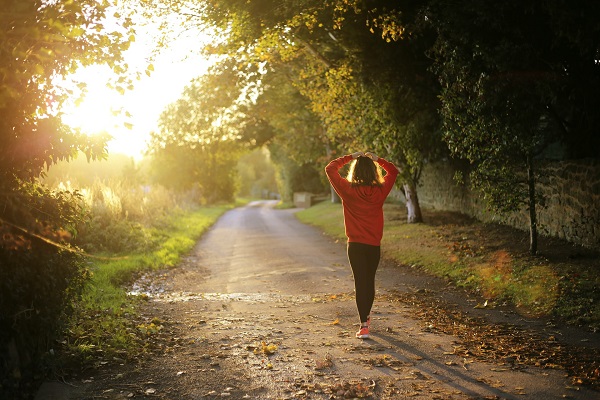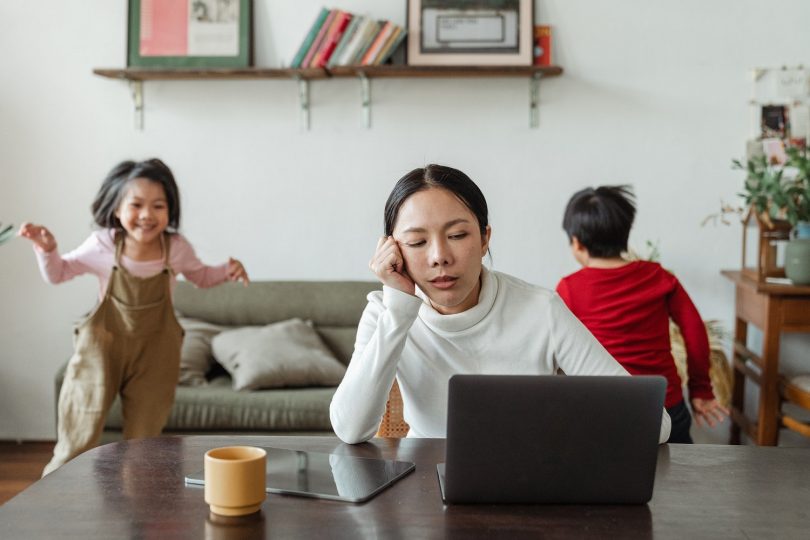Natural responses to modern day life.
Yes, stress and anxiety are the buzz words of the last decade. I am not saying this to diminish them, or to dismiss the severity of the collective pressure we are under, on the contrary, it is no surprise that for many people this is the default state of being nowadays.
Anxiety and stress were already on the rise way before the pandemic, but it hit a tipping point when stress met isolation and even more uncertainty for the future. Leaving our overstimulated minds alone in the same space with social media, the news and our own thoughts… all the while having to work from home, or having lost a job, with kids, with no one at all, there were little to none stress-free scenarios.
In addition, our minds simply don’t get a break anymore. We are continuously being bombarded by news (mostly bad news, since this results in better viewing numbers), emails, notifications, more content, doom-scrolling, to-do lists, chores, and all the things we must live up to, to be ‘good’ and ‘successful’ adult humans. As Daniel Levitin writes in his book, The Organized Mind: Thinking Straight in the Age of Information Overload:
“Information scientists have quantified all this: In 2011, Americans took in five times as much information everyday as they did in 1986 […]. During our leisure time, not counting work, each of us processes 34 gigabytes or 100,000 words every day […] we watch an average of 5 hours of television each day […] That’s not counting YouTube.” ¹
This was based on research from 12 years ago(!). At the same time, we are supposed to work like we don’t have kids and parent, like we don’t have a job (for those who are parents), and most people I know feel guilty for taking time off, time for themselves, or even for being burnt-out. Guilty?!
In an article for Psychology Today, Graham Davey, anxiety expert and psychology professor at the University of Sussex, states:
“Modern technology has provided some entirely new sources of anxiety for the present generations. These include 24-hour perpetual connectivity, the need to multitask across a range of different activities, and increasingly emotive news alerts and doomsday scenarios”²
You might be thinking, “but haven’t humans always lived under some kind of constant pressure?”. This is absolutely true, and our nervous system has always dealt with fluctuating stressors, be it predators, wars, economic crises. Yet usually these periods of stress are followed by a release. A release that this non-stop, 24-hour system, seems to deny us. To better understand what I refer to as the release, let’s dive into the nervous system to better understand the dynamic at play:
Our autonomic nervous system exists out of 2 parts: the sympathetic nervous system and parasympathetic nervous system, which, when activated, each are responsible for a number of physical responses. The first controls the fight, flight or freeze response, preparing us mentally and physically to survive. The parasympathetic nervous system controls the opposite, the rest-and-digest mechanism of the body, which helps us relax, digest, and feel at ease³ (I’ve included an image to make it easier to see them side by side and their main functions).

If one is active the other is inactive. They balance each other out. Yet, what we see more and more nowadays is that our sympathetic nervous system is constantly flicked on due to this relentless, 24H pressure, and our inability to stop. Professor Davey adds:
“We’re told anxiety is a legitimate response to the stresses of modern living, and anxiety is almost considered a status symbol that signals how busy and successful we are. But we’re increasingly told that anxiety is an emotion in need of treatment. Diagnostic categories for anxiety problems have burgeoned over the past 30 years, the pharmaceutical industry is keener than ever to medicalize anxiety and sell a pharmaceutical solution for it” ²
We wear busy-ness like a badge of honour, normalise the need for unsustainable growth, and we’re trying to measure up to each other’s unhealthy chase of more. In the end, I don’t think the pandemic was to blame for tipping us over, I think the pandemic was the first time we stopped and really assessed our current lifestyles and the constant pressure we are under. It confronted us with the fact that we have become unable to stop and do nothing, even for a moment. Because well…that would be unproductive (wink), and what would we do, sit with our thoughts (wink wink)?
For us to be happy healthy humans though, we need to be able to switch off and go through the parasympathetic state. It is in that moment that we allow ourselves to decompress and let the parasympathetic nervous system do its job and bring us back into homeostasis. A magical, natural system, no medication required, just our willingness to pause.

And I don’t mean binging Netflix, or having a drink, type of ‘decompressing’. These are numbing behaviours, not healing ones. This is not to judge anyone, because I love a good Sunday Netflix binge and enjoy a nice glass of wine after a long week. I am just as human. Just be aware that it doesn’t serve the same purpose.
If you really want to reduce your stress and anxiety levels, here are a few ways to do this:
- Saying NO! and more yes to yourself. I am aware of the privilege that comes with the ability to say no, and that sometimes life pressures are not a choice. That said, are there ways you can ask for help? For the rest of us, I am urging those who are in a position to say no, to please use this, because by choosing to take care of you and taking a breath, it will trickle down into society as a whole when you are feeling rested and optimal rather than in survival mode. You can be the bigger person in another stressful interaction. This is not something you do just for you, we are all in this together.
- Breathing exercises. Many of us do not take the time to breathe properly, while breathing is one of the best ways to send the body a message that we are safe and ok and activate the parasympathetic nervous system. Nowadays our breathing is often shallow and fast, we take more breaths per minute than we should in relaxed state. So, let’s try to become more aware of our breathing. For instance, start your morning with a breathing exercise, even if just for 5 minutes. Or when you are feeling anxious try the Box Breathing technique: breathing in for 4 seconds, hold for 4, breathe out for 4, and pause for 4 before starting again. You can either follow a square shape with your eyes, something you see in your surroundings, or draw a square shape in the air with your finger. Following the shape helps you calm down.
- Movement: moving, and especially in nature, helps us relax. So, go for a walk, do a walking meeting, take a walk with your family, dance in your living room, blast some music on your lunch break and have some fun together through movement. Moving helps us release stress and stagnant energy from the body and get back to homeostasis.
- Dial down the negativity: If you consume news and scroll social media daily, it can be a good idea to assess the quantity and type of information you are taking in. How is this affecting you? Does it leave you feeling better and energised, or rather anxious and unhappy? Be mindful of what and how much you consume and consider what kind of information you could be consuming instead.
- Hanging out IRL! The pandemic has done a number on the social anxiety levels in society. Removing real life interaction has made it harder for us to reconnect again in real life. Yet, we need physical interaction, touch, and connection. Research has shown that having face-to-face interactions can reduce stress, anxiety, and depression. ⁵
- Hugs. Research has shown that we need an X number of hugs per day. The latest one I’ve read said 8 hugs, and I am sure the number of seconds per hug matter too. I am less concerned with the numbers though, so I won’t quote particular research. Just go and hug someone (in an appropriate context obviously)! Be it a family member, a friend, colleague, or a pet. It is a great way to release stress, for both of you!
References:
- Daniel J. Levitin (2015, September 1). The Organized Mind: Thinking Straight in the Age of Information Overload, Part 1 Too much information, too many decisions, p.6
- https://www.psychologytoday.com/us/blog/why-we-worry/201811/is-there-anxiety-epidemic
- Gray, H. (2022, July 22). Anatomy, Autonomic Nervous System – StatPearls. NCBI. https://www.ncbi.nlm.nih.gov/books/NBK539845/
- https://www.news-medical.net/health/What-is-the-Nervous-System.aspx
- https://www.anxietycentre.com/tips/face-to-face-social-interactions-reduce-anxiety/
Main Photo by @ketut-subiyanto




